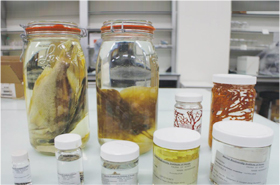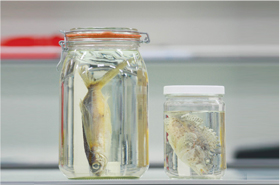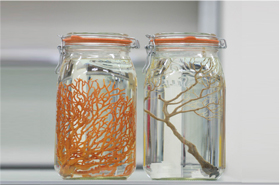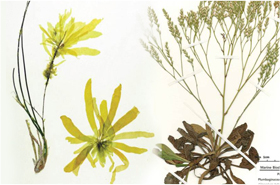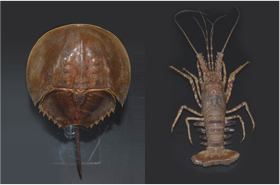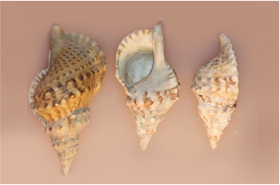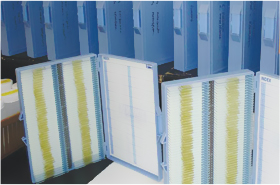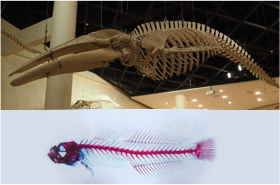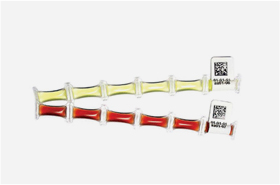Specimen Types and Characteristics
The definitions of “specimen” are as follows
A research material that has been collected in whole or in part from living organisms and processed so that it can be preserved semi-permanently
A fundamental unit to understand the history and current state of the natural world, a piece of evidence of evolutionary history, and a benchmark for the future of life sciences
Types of Marine Life Specimens
Research Specimens vs Specimens for exhibition
-
Use
Phylogenetic research, species conservation, and genetic resource
-
Type
Wet specimen, dry specimen, slide specimen, biopsy specimen, DNA, etc.
-
Production process
Sample acquisition → Pre-treatment (classification) → Identification → Preservation treatment → Storage
-
Use
Education and Learning
-
Type
Taxidermy specimens, skeletal specimens, plastination specimens
-
Production process
Sample acquisition → Pre-treatment (appearance preservation) → Identification → Reproduction of morphology (coloring and preservative treatment) → On-site installation
Types of Specimens in the Collection
Wet specimens are made using 50 to 70% ethanol to preserve the external morphology of marine organisms.
Use of specimen standardized containers; vertebrates, invertebrates, etc.
As the most common method of specimen preparation, marine organisms are dried to prevent delay and discoloration.
Seaweed plants, display specimens (crustaceans, shellfish, etc.), etc.
Taxidermy is used to preserve the external morphology of vertebrates, such as birds and mammals.
Skeletal specimens are prepared to preserve the bones separately. The bones may be disassembled and stored or reassembled to resemble their original appearance.
Organisms (such as protozoa) and tissues that are difficult to observe with the naked eye are made into slides to be examined under a microscope.
Biological (tissue) parts or DNA from living organisms are extracted and stored in ultra-low temperature conditions below -70℃.
